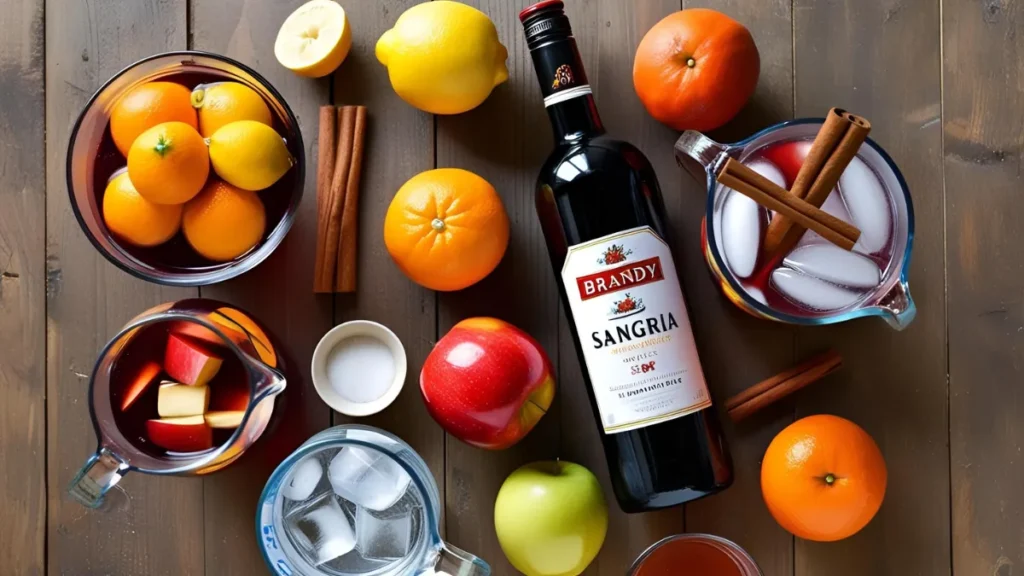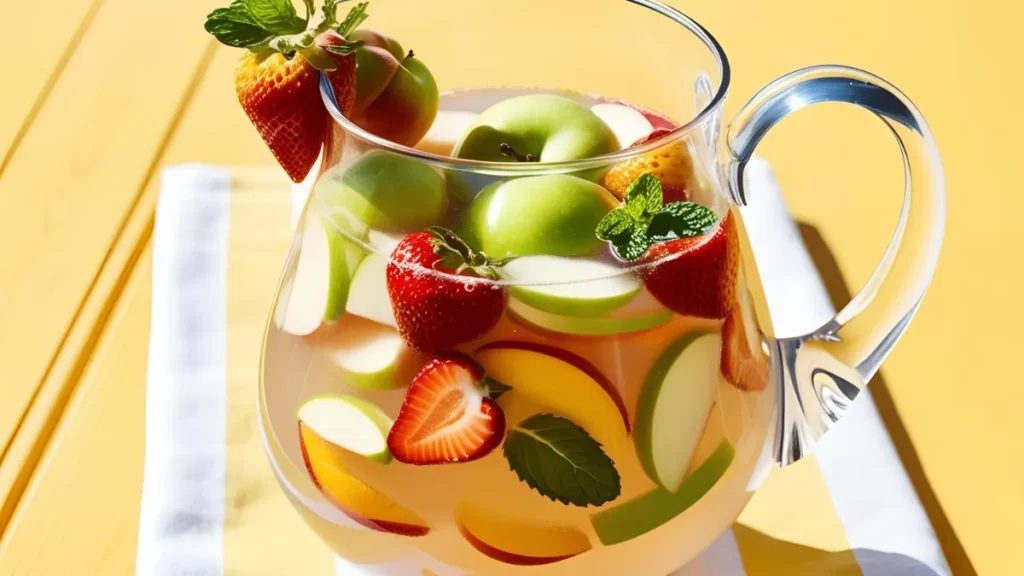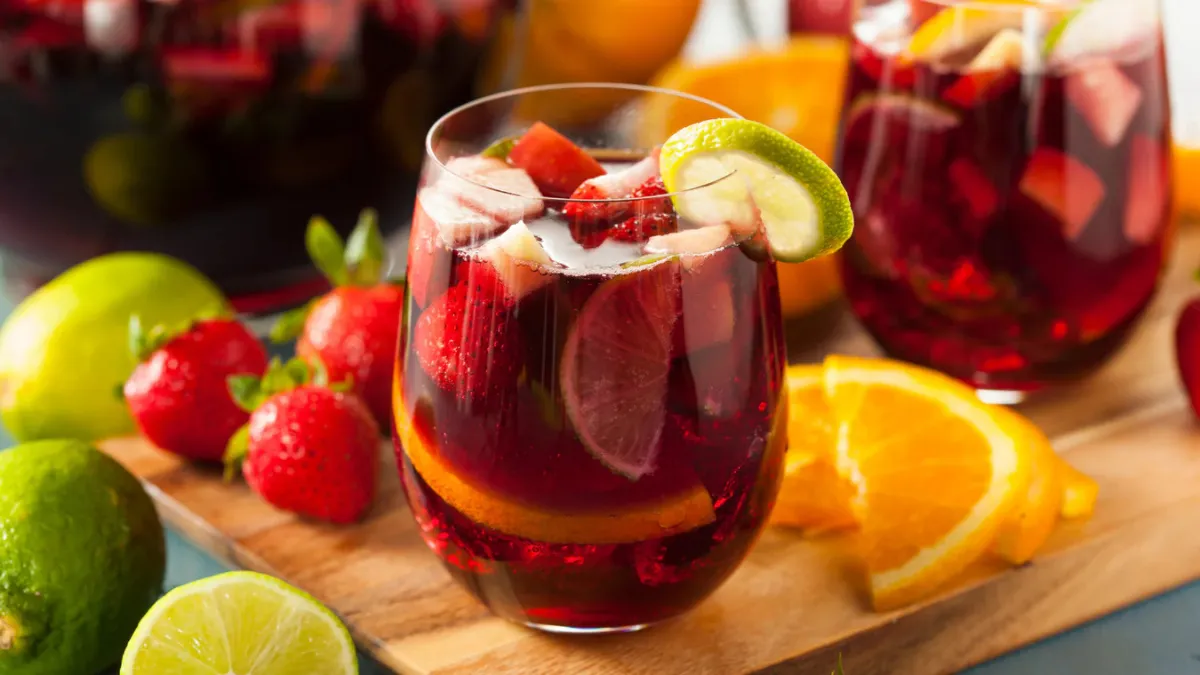Perfect mix of fruit, wine, and spirit, Sangria—the renowned Spanish punch—evokes sunny terraces, summer celebrations, and relaxed afternoons. Sangria is a go-to beverage that’s as enjoyable to create as it is to drink whether your event is small-scale get-together organizing a romantic picnic or just a way to relax. This page explores the history of sangria, its variants, and a thorough recipe to enable you to create your ideal glass.
What is Sangria?
Made mostly with red wine, chopped fruit, a sweetener, and a little bit of brandy or other spirits, Sangria is a classic Spanish beverage Though its foundation is basic, sangria’s beauty is found in its adaptability. Your taste preferences, seasonal fruits, or the occasion will help you to change it.
A Brief History of Sangria
Sangria originated in ancient Rome when water was sometimes dangerous to drink. To make it tastable, Romans would combine it with wine, herbs, and spices. The habit grew when the Romans colonized the Iberian Peninsula—modern-day Spain and Portugal.
Originally found in Spain, the variant we now know as “sangria” evolved into a cultural mainstay. Referring to the rich crimson hue of classic red wine sangria, the name “sangria” derives from the Spanish word sangre, meaning blood.
Serving the Spanish Pavilion at the 1964 World’s Fair in New York, Sangria became well-known abroad. Since then, it has become a worldwide emblem of Spanish hospitality and leisure time activities.
Ingredients for Classic Red Wine Sangria

Here’s what you’ll need for a traditional sangria recipe that serves 6-8 people:
Ingredients:
- 1 bottle of red wine (750ml) – Choose a dry, fruity wine like Tempranillo, Garnacha, Merlot, or Zinfandel.
- 1/4 cup brandy – You can also use rum or triple sec.
- 1/4 cup orange juice – Freshly squeezed is best.
- 2 tablespoons sugar or honey – Optional, depending on sweetness preference.
- 1 orange – Thinly sliced into rounds.
- 1 lemon – Thinly sliced.
- 1 apple – Cored and chopped into chunks.
- 1 cinnamon stick (optional) – Adds warm, spiced notes.
- 1-2 cups soda water or lemon-lime soda – For a bubbly finish (add just before serving).
Ice – For serving.
Step-by-Step Preparation
1. Prepare the Fruit: Give the fruit lots of washing. Cut the lemon and orange in wedges or rounds. Core and cut the apple into bits fit for bites.
2. Mix the Base: Combine in a big pitcher the red wine, brandy, orange juice, sugar or honey. Stir until the sugar dissolves completely.
3. Add the fruit and spices: If used, toss the cut oranges, lemons, apples, cinnamon stick. To let the flavors mingle, let the mixture rest in the refrigerator for minimum two to four hours. For optimal results, chill overnight.
4. Finish and Serve: Pour soda water—or lemon-lime soda for a sweeter variation—into the pitcher just before serving. To glasses, add ice; pour the sangria; garnish with additional fruit pieces.
Variations of Sangria
A feature of sangria is its flexibility. Here are some common variants:
1. White Sangria (Sangria Blanca)
Use Pinot Grigio or Sauvignon Blanc, a clean white wine.
Add smaller items include green apples, strawberries, pineapple, and peaches.
Substitute white grape juice or peach nectar for orange juice.
2. Rošé Sangria
Made with rosé wine for a pink-hued flowery beverage.
Add berries, melon, and grapefruit.
3. Sparkling Sangria
Invest in a dry sparkling wine such as Prosecco or Cava.
Add citrus fruits and serve straight away to keep the fizz.
4. Autumn or Winter Sangria
Use red wine alongside more strongly aromatic spices like star anise and cloves.
Add berries, pomegranates, pears, or figs.
For a mellow, mulled-wine type sangria, gently warm it.
Tips for the Perfect Sangria

Select a reasonably priced yet decent wine. Though you should not discard top-shelf bottles, it is the foundation of your drink.
Never cut off the resting period. Chilling the sangria lets the fruit and wine really blend together.
Harmony sweetener. Taste the sugar or sweetener to adjust, particularly if your wine already tastes sweet.
Present coldly. Especially in hot months, Sangria tastes best cold.
Food Pairings with Sangria

Sangria pairs beautifully with a range of dishes, particularly those inspired by Spanish or Mediterranean cuisine:
- Tapas like patatas bravas, olives, and chorizo
- Grilled meats or seafood
- Paella
- Cheese and charcuterie platters
- Spicy food (the fruitiness helps to moderate the heat)
FAQs
1. Can I make sangria ahead of time?
Yes! In fact, sangria tastes better when it’s made ahead of time. Letting it sit in the fridge for at least 4 hours—or ideally overnight—allows the fruit and wine to fully infuse, enhancing the flavor. Just wait to add soda water or sparkling ingredients until right before serving so they stay fizzy.
2. What kind of wine is best for sangria?
For red sangria, use a fruity, medium-bodied red wine like Tempranillo, Garnacha (Grenache), Merlot, or Zinfandel. Avoid wines that are too tannic or oaky. For white sangria, go for a crisp white wine like Sauvignon Blanc, Pinot Grigio, or even a dry Riesling.
3. Can sangria be made without alcohol?
Yes, you can make a delicious non-alcoholic version of sangria using grape juice, cranberry juice, or pomegranate juice as a base. Mix with orange juice, lemon-lime soda or sparkling water, and fresh fruit. It’s refreshing and kid-friendly!
4. How long does sangria last in the fridge?
Sangria can be stored in the refrigerator for up to 3 days. The flavor may deepen, but the fruit might start to get mushy after a couple of days. If you want it fresh longer, remove the fruit after the first day and add new fruit when serving.
Conclusion
Sangria honors taste, color, and conviviality rather than only a drink. Sangria is a beverage that embraces innovation and brings people together whether your taste is classic Spanish or you are putting your own spin on it. Try this dish; play about with variants; and celebrate happy times.




